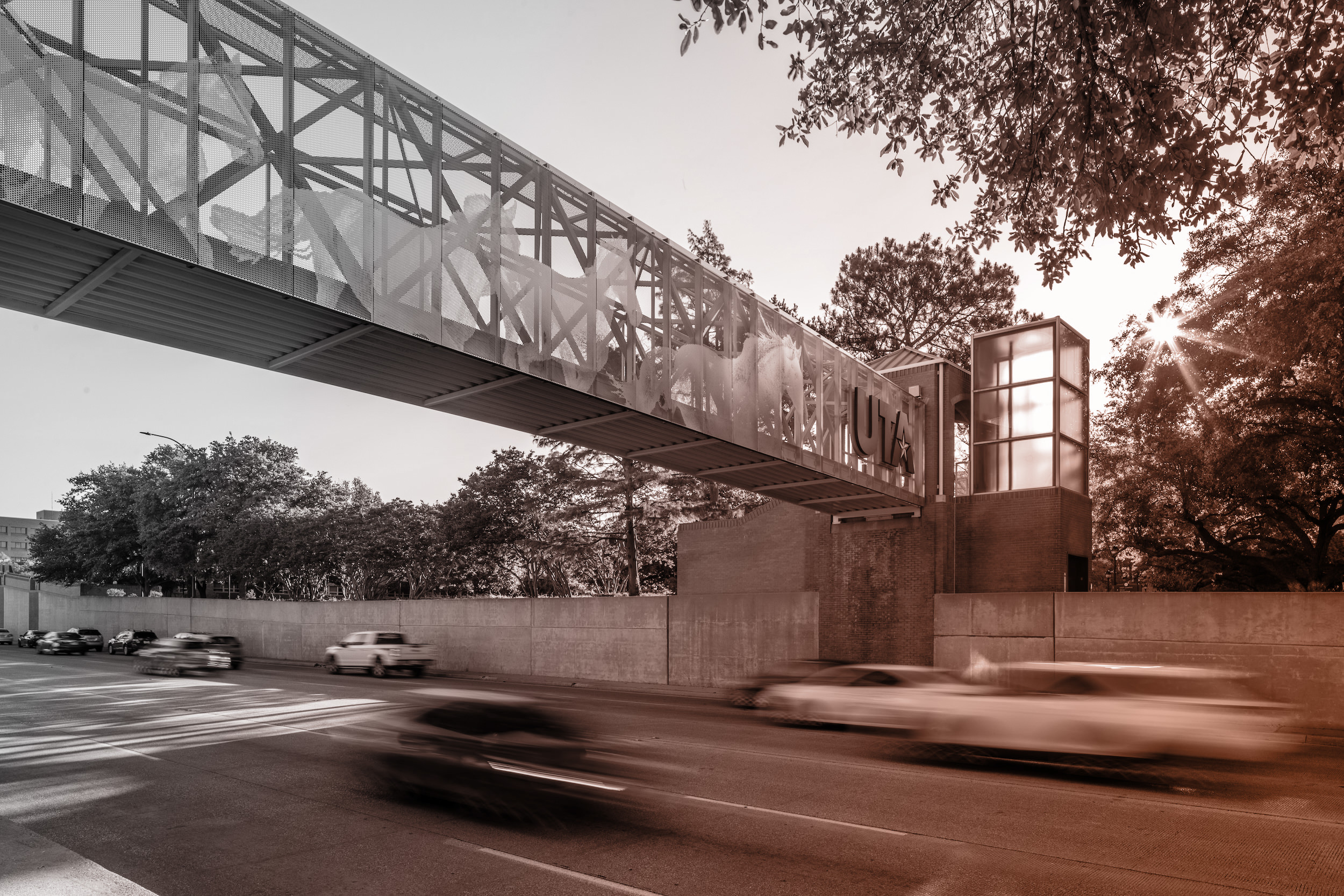How LUCE et Studio Architects Blends Story, Architecture, and Materials to Build Things That Matter
Jennifer Luce, founder of LUCE et Studio Architects, has always been drawn to the workshop-atelier model that values conversation, collaboration, and design. And it shows in both her work and her working relationships. With a rich family history in textile design and production, Luce’s design signature of using metals as story-bearing media has further burnished her firm’s reputation for buildings that are resolutely modern and dependent on a high level of craft. When metalcrafting and design collaboration are needed, Luce calls Zahner. With Zahner as a partner in design, engineering, fabrication, and installation, Luce elevates metal from material to language, creating architecture that feels alive and enduring.
From her earliest memories growing up in Montréal, in her father’s textile studio, Jennifer Luce has always been fascinated by the interplay of patterns and material.
With a passion for textures, structures, and colors, and the combinations of these elements, Luce has cultivated a creativity and love for calculations that have turned LUCE et Studio into one of the most admired architecture firms in North America.
“I had a math mind, and an art mind, and the decision to go into architecture just felt natural,” Luce said.
That early duality of the spatial and logical has matured into a practice grounded in material curiosity, design narrative, and collaboration.
Jennifer Luce, FAIA, Founder & Principle at LUCE et Studio Architects
The ethos at LUCE is clearly and concisely captured in its own design philosophy: “We believe that architecture is a conversation… that exceptional design happens through inquisitive exchange between client and architect, building and landscape, among teams, makers, thinkers, room, table, chair, materials and light.”
For Luce, metal has always been a favorite material to work with.
“Metal is a part of all our designs, it’s elemental and sensual at the same time,” Luce said. “Steel, brass, aluminum, bronze, we treat it like paper, malleable, sculpting, folding it, to prove just how soft and dynamic it actually is to the touch and to the eye.”
When challenging projects and geometries in metal require outside assistance, she calls Zahner.
The Nissan Styling Studio is constructed with a double-layered perforated metal skin.
Image © Paul Rivera Photography, Courtesy of Luce et StudioThe showcase courtyard uses an offset spiral to maintain privacy.
Image © Paul Rivera Photography, Courtesy of Luce et StudioThe collaboration: From bold ideas to the finer details
Luce’s first collaboration with Zahner began with the Nissan Styling Studio in Detroit, where she and former A. Zahner Co. CEO Bill Zahner wrestled with the challenge of an egg-shaped courtyard concept that would allow Nissan engineers to showcase their latest designs and prototypes in style while maintaining some privacy.
“At first, I thought that the egg would be a solid form,” said Luce. “But showing that rendering to Bill and his team turned it into something translucent, and our conversation allowed it to evolve in a way that we never would have imagined.”
Zahner’s role as design partner unlocked something new. The result was a double-layered perforated metal skin with an offset spiral that extends 30 feet into the sky, allowing light to enter while preventing viewers from peering in from the outside.
“We didn’t have all the answers,” Luce said. “And Zahner was there to help us work through them, to collaborate, and find the answers together.”
That spirit of trust and exploration set the tone for subsequent work.
Fast-forward to the landmark Mingei International Museum renovation in San Diego, another project where Luce’s love of metal and Zahner’s legacy of metal innovation converged.
For the Mingei project, Luce asked Zahner to help develop a variety of metal design elements, including a ceiling inspired by a player-piano roll, a custom fence of hand-twisted brass, and other bespoke metal elements that added to the storytelling as much as the structure.
“Bill suggested a two-sided picket element, with a literal twist, which is stunning, and there’s just no way we could have had that conversation with anyone else,” said Luce.
Custom fence of hand-twisted brass at the Mingei Museum, designed by LUCE et Studio and Zahner.
Design philosophy & materiality refined
Luce divides her practice not by typology but by scale and application, keeping her design instincts sharp and her practice energized.
“We like to curate a mix of projects so that we’re always involved in things of different scales,” said Luce. “At any one time, maybe a third of our work is residential, a third is cultural, and another third might be something alternative like art or graphics. The one constant in all of our work is the importance of the story, and how to tell it.”
For Luce, the partnership with Zahner has been critical to achieving the signature designs she’s become known for, particularly at the Mingei, which was even the subject of a recent ByDesign video vignette featuring interviews with Jen Luce and Bill Zahner.
Luce designed a patinated-steel ceiling for the Mingei Museum's café, which showcases a tapestry by Claudy Jongstra.
PHOTO © NIC LEHOUXZahner’s willingness to engage in concepting, engineering, craft, and material selection really cultivates new and different ways that we imagine light, movement, texture, and meaning. It happens every time we work with them, it’s become a wonderful partnership.
Jennifer Luce Founder & Principal Architect at LUCE et studio






 PHOTO © A. ZAHNER COMPANY.
PHOTO © A. ZAHNER COMPANY.






 PHOTO © A. ZAHNER COMPANY.
PHOTO © A. ZAHNER COMPANY.

 Photo ©
Photo © 


 PHOTO ©️ Parrish Ruiz de Velasco (parrch.com)
PHOTO ©️ Parrish Ruiz de Velasco (parrch.com)







 Ɱ, Creative Commons Attribution-Share Alike 4.0 International license, edited.
Ɱ, Creative Commons Attribution-Share Alike 4.0 International license, edited.

